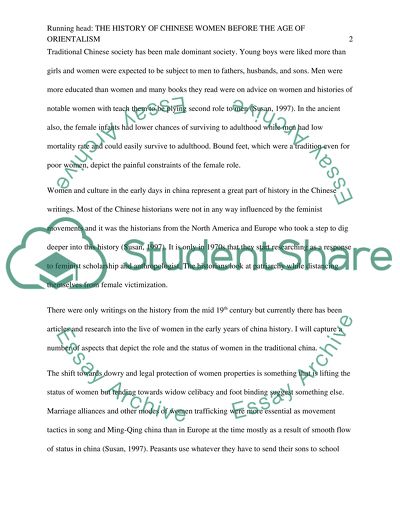The history of Chinese women before the age of orientalism Essay. Retrieved from https://studentshare.org/history/1496920-write-your-own-topic
The History of Chinese Women before the Age of Orientalism Essay. https://studentshare.org/history/1496920-write-your-own-topic.


